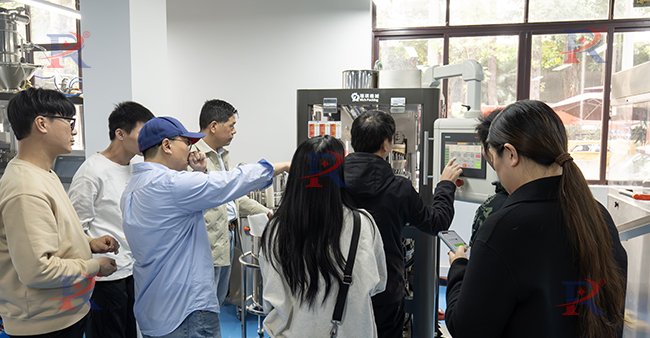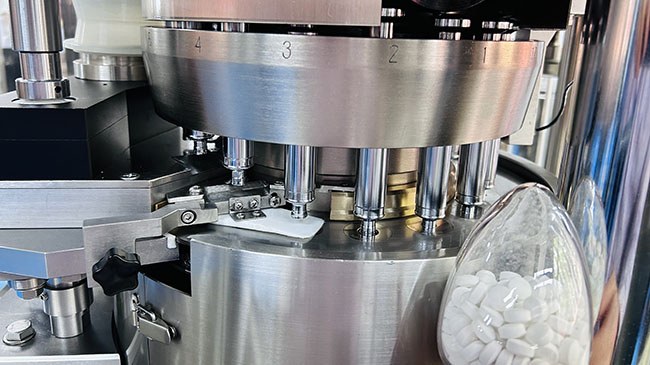Η συσκευασία σε κυψέλες είναι μια ευρέως χρησιμοποιούμενη και δημοφιλής μέθοδος συσκευασίας, η οποία σχηματίζει δομές κυψέλης διαφορετικών μεγεθών και σχημάτων με θέρμανση του πλαστικού υλικού και χρήση καλουπιών και διαφορών πίεσης. Οι μηχανές συσκευασίας κυψέλης χρησιμοποιούνται ευρέως στις βιομηχανίες φαρμάκων, τροφίμων, προσωπικής φροντίδας και καλλυντικών. Σύμφωνα με τις διαφορετικές διαδικασίες παραγωγής, μπορούν να χωριστούν σε θερμή χύτευση, ψυχρή χύτευση, ρολό, επίπεδη και άλλους τύπους, για διαφορετικά προϊόντα που μπορούν να επιλέξουν διαφορετικά μοντέλα που μπορούν να καλύψουν διαφορετικές ανάγκες προϊόντων. Παρακάτω, θα βρείτε λεπτομερείς περιγραφές των κύριων τύπων μηχανών συσκευασίας κυψέλης.
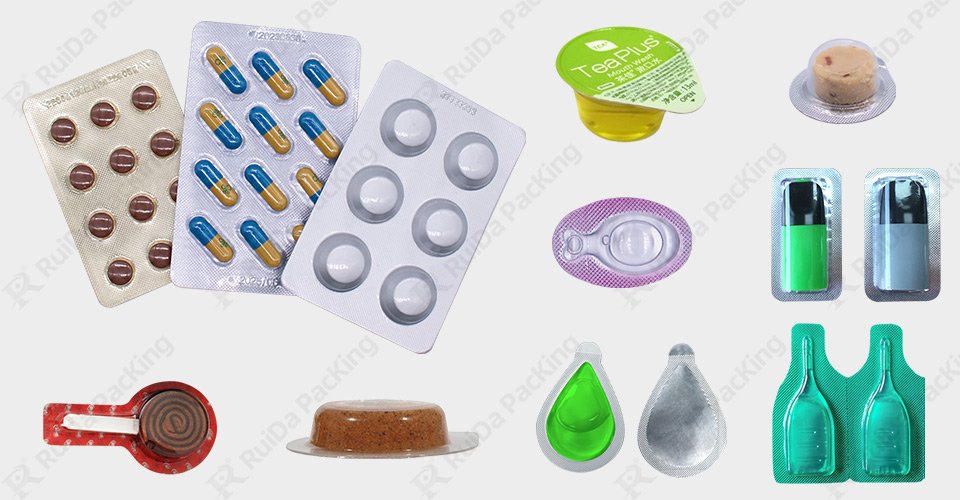
Μηχανές Θερμοδιαμόρφωσης Συσκευασίας Μπλίστερ Πώς Λειτουργεί
Η διαδικασία ολοκληρώνεται με τη χύτευση μεμονωμένων ή πολλαπλών μεμονωμένων κοιλοτήτων στο επιθυμητό σχήμα χρησιμοποιώντας πίεση ή πνευματική πίεση, την τοποθέτηση του προϊόντος στις κοιλότητες μέσω ενός καθοδικού αγωγού, τη σφράγισή τους με ένα υλικό υποστήριξης (συνήθως αλουμινόχαρτο ή χαρτόνι) και τη διάτρηση και το σφράγισμα σε μεμονωμένα πάνελ.
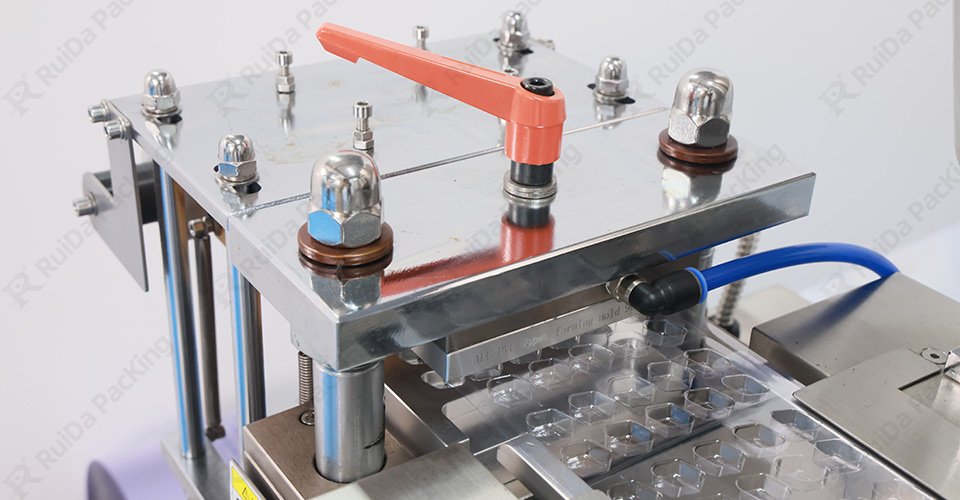
Χαρακτηριστικά
– Ευελιξία: Οι μηχανές θερμοδιαμόρφωσης μπορούν να δεχθούν διάφορα υλικά όπως PVC, PET και PP.
– Υψηλή ταχύτητα: Ικανότητα παραγωγής μεγάλων ποσοτήτων σε σύντομο χρονικό διάστημα.
– Προσαρμογή: Τα μηχανήματα μπορούν να διαμορφωθούν ώστε να δημιουργούν διαφορετικά σχήματα και μεγέθη φουσκαλών.
Εφαρμογές
Οι μηχανές θερμοδιαμόρφωσης συσκευασίας σε μορφή μπλίστερ χρησιμοποιούνται ευρέως στη φαρμακευτική βιομηχανία για τη συσκευασία δισκίων και καψουλών, σε καταναλωτικά αγαθά για είδη όπως μπαταρίες και παιχνίδια, και στη βιομηχανία ηλεκτρονικών ειδών για προϊόντα όπως μονάδες USB και καλώδια.
Μηχανές συσκευασίας κυψέλης ψυχρής διαμόρφωσης Πώς λειτουργεί
Οι μηχανές συσκευασίας blister ψυχρής διαμόρφωσης χρησιμοποιούν μια διαδικασία όπου ένα φύλλο αλουμινόχαρτου πιέζεται σε ένα καλούπι για να δημιουργήσει κοιλότητες χωρίς την εφαρμογή θερμότητας. Το αλουμινόχαρτο συνήθως επικαλύπτεται με πλαστικό και άλλα υλικά για να βελτιωθούν οι ιδιότητες φραγμού του. Μετά τον σχηματισμό των κοιλοτήτων, τα προϊόντα εισάγονται και η συσκευασία σφραγίζεται με ένα δευτερεύον στρώμα υλικού, συνήθως μια θερμοκολλούμενη μεμβράνη.
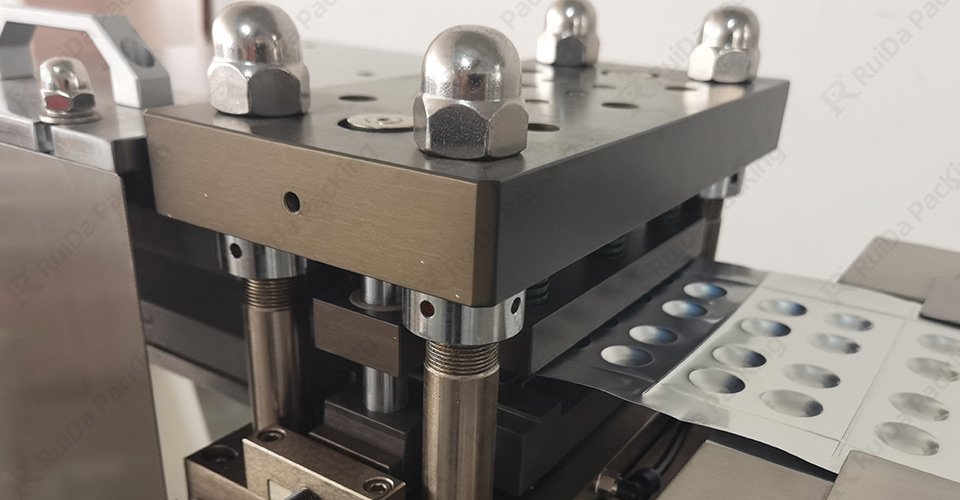
Χαρακτηριστικά
– Ανώτερη προστασία φραγμού: Η ψυχρή διαμόρφωση παρέχει ένα εξαιρετικό φράγμα κατά της υγρασίας, του φωτός και του οξυγόνου, καθιστώντας την ιδανική για ευαίσθητα προϊόντα.
– Ανθεκτικότητα: Η συσκευασία είναι στιβαρή και μπορεί να προστατεύσει τα εύθραυστα αντικείμενα κατά τη μεταφορά.
– Μεγαλύτερη διάρκεια ζωής: Η συσκευασία ψυχρής μορφοποίησης παρατείνει τη διάρκεια ζωής των προϊόντων παρέχοντας καλύτερη προστασία.
Εφαρμογές
Οι μηχανές συσκευασίας σε μορφή κυψέλης ψυχρής διαμόρφωσης χρησιμοποιούνται κυρίως στη φαρμακευτική βιομηχανία για τη συσκευασία προϊόντων ευαίσθητων στην υγρασία, όπως κάψουλες, δισκία και ορισμένες ιατρικές συσκευές. Η τεχνολογία αυτή εκτιμάται ιδιαίτερα για τη διασφάλιση της σταθερότητας και της ακεραιότητας του προϊόντος καθ' όλη τη διάρκεια του κύκλου ζωής του.
Μηχανή συσκευασίας κυψελών υψηλής ταχύτητας με ρολό Πώς λειτουργεί
Μηχανή συσκευασίας φουσκαλών υψηλής ταχύτητας με ρολό Χρησιμοποιήστε συνεχείς κυλίνδρους για να σχηματίσετε κοιλότητες με φουσκάλες και να σφραγίσετε το προϊόν. Η διαδικασία περιλαμβάνει την τροφοδοσία μιας πλαστικής μεμβράνης μέσω θερμαινόμενων κυλίνδρων που διαμορφώνουν τις κοιλότητες. Μετά τη διαμόρφωση, το προϊόν τοποθετείται στις κοιλότητες και εφαρμόζεται ένα υλικό στεγανοποίησης, συνήθως αλουμινόχαρτο. Το τελικό προϊόν στη συνέχεια τρυπιέται και κόβεται σε μεμονωμένες συσκευασίες.
Χαρακτηριστικά
– Υψηλής Ταχύτητας Παραγωγή: Σχεδιασμένη για ανάγκες μαζικής παραγωγής, συνεχής παραγωγή διαμόρφωσης με ρολό για κατασκευή υψηλής ταχύτητας.
– Συνέπεια: Η αποτελεσματική και σταθερή απόδοση διασφαλίζει τη συμμόρφωση και την ακρίβεια της συσκευασίας κατά τη διάρκεια μεγάλων παραγωγικών περιόδων.
– Αποδοτικότητα: Τα μηχανήματα τύπου κυλίνδρου μεγιστοποιούν την αποδοτικότητα της παραγωγής ελαχιστοποιώντας τον χρόνο διακοπής λειτουργίας.
Εφαρμογές
Οι μηχανές συσκευασίας blister τύπου κυλίνδρου χρησιμοποιούνται συνήθως σε βιομηχανίες που απαιτούν συσκευασία υψηλής ταχύτητας, όπως τρόφιμα και ποτά, φαρμακευτικά προϊόντα και ηλεκτρονικά είδη. Είναι ιδανικές για προϊόντα που πρέπει να συσκευάζονται σε μεγάλους όγκους με σταθερή ποιότητα.
Μηχανές συσκευασίας κυψέλης επίπεδης πλάκας Πώς λειτουργεί
Μηχανή συσκευασίας κυψέλης επίπεδης πλάκας Σχηματίστε κοιλότητες χρησιμοποιώντας ένα επίπεδο καλούπι, όπου μια πλαστική μεμβράνη πιέζεται για να πάρει το σχήμα της. Σε αντίθεση με τις μηχανές τύπου κυλίνδρου, οι μηχανές επίπεδης πλάκας χρησιμοποιούν μια στατική διαδικασία διαμόρφωσης. Αφού σχηματιστούν οι κοιλότητες, το προϊόν τοποθετείται στην κυψέλη και η συσκευασία σφραγίζεται με ένα υλικό υποστήριξης. Το τελικό βήμα περιλαμβάνει την κοπή των κυψελών σε μεμονωμένες συσκευασίες.
Χαρακτηριστικά
– Ακρίβεια: Οι μηχανές επίπεδης πλάκας προσφέρουν υψηλή ακρίβεια, καθιστώντας τες κατάλληλες για τη συσκευασία μικρών ή ευαίσθητων αντικειμένων.
– Ευελιξία: Μπορούμε να προσαρμόσουμε διαφορετικά μεγέθη και σχήματα καλουπιών για να καλύψουμε τις ανάγκες διαφορετικών προϊόντων.
– Χαμηλά Απόβλητα: Μειωμένα απόβλητα μέσω ορθολογικής διάταξης.
Εφαρμογές
Οι μηχανές συσκευασίας blister επίπεδης πλάκας χρησιμοποιούνται συχνά για μικρότερες παραγωγές, όπου η ακρίβεια είναι ύψιστης σημασίας. Αυτό τις καθιστά ιδανικές για τη συσκευασία απαιτητικών ειδών, όπως φαρμακευτικά προϊόντα, μικρές ιατρικές συσκευές, καταναλωτικά προϊόντα υψηλής ποιότητας και ηλεκτρονικά είδη.
Μηχανές συνεχούς συσκευασίας σε φουσκάλες Πώς λειτουργεί
Οι μηχανές συνεχούς συσκευασίας σε μορφή blister λειτουργούν με μια αδιάλειπτη ροή εργασίας, όπου η πλαστική μεμβράνη και το υλικό υποστήριξης τροφοδοτούνται συνεχώς μέσω της μηχανής. Οι διαδικασίες διαμόρφωσης, πλήρωσης και σφράγισης πραγματοποιούνται με απρόσκοπτη ακολουθία, μειώνοντας τον χρόνο διακοπής λειτουργίας και αυξάνοντας την παραγωγικότητα.
Χαρακτηριστικά
– Υψηλή απόδοση: Οι μηχανές συνεχούς λειτουργίας ελαχιστοποιούν τον χρόνο αδράνειας μεταξύ των διεργασιών, μεγιστοποιώντας την παραγωγικότητα.
– Αυτοματοποίηση: Αυτά τα μηχανήματα είναι συχνά πλήρως αυτοματοποιημένα, μειώνοντας την ανάγκη για χειροκίνητη παρέμβαση.
– Επεκτασιμότητα: Τα συνεχή συστήματα μπορούν εύκολα να επεκταθούν για μεγαλύτερους όγκους παραγωγής.
Εφαρμογές
Οι μηχανές συνεχούς συσκευασίας σε μορφή blister είναι κατάλληλες για βιομηχανίες που απαιτούν παραγωγή μεγάλου όγκου, όπως τρόφιμα, καλλυντικά και ιατροτεχνολογικά προϊόντα. Η αποδοτικότητα και η ταχύτητά τους τις καθιστούν ιδανικές για προϊόντα που πρέπει να συσκευάζονται γρήγορα και με συνέπεια.
Ημιαυτόματες μηχανές συσκευασίας σε φουσκάλες Πώς λειτουργεί
Οι ημιαυτόματες μηχανές συσκευασίας σε μορφή blister συνδυάζουν χειροκίνητες και αυτοματοποιημένες διαδικασίες. Συνήθως, ο χειριστής φορτώνει τα προϊόντα και τα υλικά στη μηχανή, η οποία στη συνέχεια χειρίζεται αυτόματα τις διαδικασίες διαμόρφωσης, σφράγισης και κοπής. Ο χειριστής μπορεί επίσης να συμμετέχει στον ποιοτικό έλεγχο και τη συναρμολόγηση της συσκευασίας.
Χαρακτηριστικά
– Ευελιξία: Τα ημιαυτόματα μηχανήματα προσφέρουν ευελιξία στην παραγωγή, καθιστώντας τα κατάλληλα για μικρές έως μεσαίες παραγωγικές διαδικασίες.
– Οικονομικά αποδοτικό: Κατάλληλη τιμή σε σύγκριση με πλήρως αυτοματοποιημένο σύστημα, κατάλληλο για μικρές επιχειρήσεις παραγωγής.
– Ευκολία χρήσης: Εύκολο στη λειτουργία και μείωση του κόστους εκμάθησης.
Εφαρμογές
Οι ημιαυτόματες μηχανές συσκευασίας blister χρησιμοποιούνται συνήθως σε μικρές και μεσαίες επιχειρήσεις που πρέπει να εξισορροπήσουν την αποδοτικότητα της παραγωγής με τον έλεγχο του κόστους. Είναι ιδανικές για εταιρείες που παράγουν μια ποικιλία προϊόντων σε μικρότερες ποσότητες, όπως εξειδικευμένα καταναλωτικά αγαθά, εξειδικευμένα τρόφιμα και χειροποίητα προϊόντα.
Πλήρως Αυτόματες Μηχανές Συσκευασίας Μπλίστερ Πώς Λειτουργεί
Οι πλήρως αυτόματες μηχανές συσκευασίας blister χειρίζονται όλες τις πτυχές της διαδικασίας συσκευασίας χωρίς ανθρώπινη παρέμβαση. Αφού ο εξοπλισμός ολοκληρώσει την πλήρωση του υλικού, μπορεί να ολοκληρώσει αυτόματα τη θέρμανση του πλαστικού φύλλου, την πίεση και τη χύτευση των blister, την εκκένωση και την πλήρωση του προϊόντος, τη θέρμανση και τη σφράγιση της πίσω πλάκας και τη διάτρηση και τη συσκευασία. Ολόκληρη η διαδικασία παραγωγής ολοκληρώνεται από προηγμένο σύστημα ελέγχου, το οποίο μπορεί να παρακολουθεί και να ρυθμίζει ολόκληρη τη διαδικασία παραγωγής.
Χαρακτηριστικά
– Υψηλή απόδοση: Η πλήρως αυτοματοποιημένη παραγωγή εξαλείφει την ανάγκη για χειρωνακτική εργασία, μειώνει τους χρόνους κύκλου και παρέχει αποτελεσματικότητα παραγωγής που την καθιστά κατάλληλη για ανάγκες παραγωγής μεγάλου όγκου.
– Ακρίβεια και Συνέπεια: Ο αυτοματισμός διασφαλίζει ότι κάθε συσκευασία παράγεται με τα ίδια υψηλά πρότυπα, μειώνοντας τον κίνδυνο σφαλμάτων.
– Προηγμένη τεχνολογία: Αυτά τα μηχανήματα συχνά διαθέτουν χαρακτηριστικά όπως χειριστήρια με οθόνη αφής, απομακρυσμένη παρακολούθηση και ενσωμάτωση με άλλα συστήματα παραγωγής.
Εφαρμογές
Οι πλήρως αυτόματες μηχανές συσκευασίας σε μορφή blister χρησιμοποιούνται σε μεγάλης κλίμακας περιβάλλοντα παραγωγής, όπως η φαρμακευτική βιομηχανία, η ηλεκτρονική και η κατασκευή καταναλωτικών αγαθών. Αποτελούν την προτιμώμενη επιλογή για εταιρείες που δίνουν προτεραιότητα στην αποτελεσματικότητα, την ακρίβεια και την ικανότητα χειρισμού μεγάλων όγκων παραγωγής.
Παράγοντες που πρέπει να λάβετε υπόψη κατά την επιλογή μιας μηχανής συσκευασίας κυψέλης
Όταν επιλέγετε την κατάλληλη μηχανή συσκευασίας blister για τις ανάγκες σας, πρέπει να λάβετε υπόψη διάφορους παράγοντες για να διασφαλίσετε ότι θα κάνετε την καλύτερη επιλογή. Αυτοί οι παράγοντες θα σας βοηθήσουν να εξισορροπήσετε τις απαιτήσεις παραγωγής, τον προϋπολογισμό και τις προδιαγραφές του προϊόντος.
Όγκος Παραγωγής
Θεώρηση
Η κλίμακα της παραγωγής σας θα επηρεάσει σημαντικά την επιλογή του μηχανήματος. Εάν χρειάζεται να παράγετε χιλιάδες μονάδες ανά ώρα, θα χρειαστείτε ένα πλήρως αυτόματο ή συνεχές μηχάνημα. Για μικρότερους όγκους παραγωγής, μπορεί να αρκεί ένα ημιαυτόματο ή μηχάνημα επίπεδης πλάκας.
Σύσταση
– Υψηλός Όγκος: Πλήρως αυτόματες ή συνεχείς μηχανές.
– Μεσαίου όγκου: Μηχανές τύπου κυλίνδρου ή θερμοδιαμόρφωσης.
– Χαμηλός όγκος: Ημιαυτόματες ή μηχανές επίπεδης πλάκας.
Τύπος προϊόντος
Θεώρηση
Η φύση του προϊόντος που συσκευάζεται επηρεάζει επίσης την επιλογή της μηχανής. Για προϊόντα ευαίσθητα στην υγρασία, μια μηχανή ψυχρής διαμόρφωσης μπορεί να είναι απαραίτητη. Εάν το προϊόν απαιτεί συσκευασία ακριβείας, μια μηχανή επίπεδης πλάκας μπορεί να είναι πιο κατάλληλη.
Σύσταση
– Ευαίσθητο στην υγρασία: Μηχανές ψυχρής διαμόρφωσης.
– Εύθραυστα/Λεπτά: Μηχανές επίπεδης πλάκας.
– Γενικά Καταναλωτικά Αγαθά: Μηχανές θερμοδιαμόρφωσης ή μηχανές τύπου κυλίνδρου.
Κόστος και Προϋπολογισμός
Θεώρηση
Ο προϋπολογισμός σας θα καθορίσει τον τύπο του μηχανήματος που μπορείτε να αντέξετε οικονομικά. Ενώ τα πλήρως αυτόματα μηχανήματα προσφέρουν υψηλή απόδοση, έχουν υψηλό κόστος. Τα ημιαυτόματα μηχανήματα, από την άλλη πλευρά, παρέχουν μια ισορροπία μεταξύ κόστους και λειτουργικότητας.
Σύσταση
– Υψηλός Προϋπολογισμός: Πλήρως αυτόματες ή συνεχείς μηχανές.
– Μεσαίου προϋπολογισμού: Μηχανές τύπου κυλίνδρου ή θερμοδιαμόρφωσης.
– Χαμηλού Προϋπολογισμού: Ημιαυτόματες μηχανές.
Επίπεδο αυτοματισμού
Θεώρηση
Ανάλογα με τον τύπο του προϊόντος σας, τη ζήτηση παραγωγής και τον αριθμό του προσωπικού, για να προσδιορίσετε εάν η επιχείρησή σας είναι κατάλληλη, επιλέξτε ημιαυτόματη ή πλήρως αυτόματη μηχανή συσκευασίας blister. Η πλήρως αυτόματη μηχανή έχει υψηλή απόδοση και εξοικονομεί εργασία, αλλά το αρχικό κόστος επένδυσης είναι μεγαλύτερο.
Σύσταση
– Περιβάλλον έντασης εργασίας: Ημιαυτόματες μηχανές.
– Εστιασμένο στον αυτοματισμό: Πλήρως αυτόματες ή συνεχούς λειτουργίας μηχανές.
Περιβαλλοντικές Σκέψεις
Θεώρηση
Ο περιβαλλοντικός αντίκτυπος της διαδικασίας συσκευασίας σας αποκτά ολοένα και μεγαλύτερη σημασία. Θα πρέπει να δίνεται προτεραιότητα σε μηχανήματα που ελαχιστοποιούν τα απόβλητα, χρησιμοποιούν ανακυκλώσιμα υλικά ή λειτουργούν με ενεργειακή απόδοση.
Σύσταση
– Οικολογική εστίαση: Μηχανήματα με χαρακτηριστικά χαμηλής σπατάλης και ενεργειακής απόδοσης.
– Στόχοι βιωσιμότητας: Εξετάστε το ενδεχόμενο μηχανών θερμοδιαμόρφωσης που χρησιμοποιούν ανακυκλώσιμα υλικά.
Μέσα από την παραπάνω εισαγωγή, πιστεύω ότι έχετε μια σχετική κατανόηση των διαφόρων τύπων μηχανών συσκευασίας blister. Στη συνέχεια, συνδυάζοντας τον τρέχοντα τύπο προϊόντος σας, την παραγωγή και το κόστος του προϋπολογισμού σας και άλλους παράγοντες, θα είστε σε θέση να επιλέξετε την κατάλληλη μηχανή συσκευασίας blister για εσάς. Ο σωστός εξοπλισμός μπορεί να αποφέρει σημαντικά οφέλη στην επιχείρησή σας, συμπεριλαμβανομένης της αποδοτικότητας της παραγωγής, του ανθρώπινου δυναμικού και του κόστους χρόνου κ.λπ. Εάν χρειάζεστε περισσότερες πληροφορίες σχετικά με τις μηχανές συσκευασίας blister, μπορείτε να δώσετε προσοχή και επικοινωνήστε μαζί μας.
